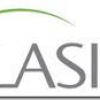Blog post by: Eye Physicians of Long Beach

Several articles have recently been published that support the conclusion that, in the year 2011, you are better off with all laser LASIK than with LASIK using a microkeratome. 1-5 Both procedures are relatively safe and very successful but, all laser LASIK offers the safest, most precise treatment of hyperopia (farsightedness), myopia (nearsightedness) and astigmatism.
During all laser LASIK, the initial laser delivers tiny, rapid pulses of laser light to create your corneal flap instead of using a metal blade. All laser LASIK allows the surgeon to more accurately control the shape of the flap, the thickness of the flap and the architecture of the flap. It gives your doctor the ability to tailor the dimensions of your corneal flap based on what’s best for your eye. Everything from the diameter of your flap to the angle of its edges can be precisely determined. This is important because everyone’s eyes are shaped a little differently. As a result, all laser LASIK is a safer procedure that leads to faster recover of vision and better vision.1-5
More patient get better outcomes when their LASIK procedure is performed with the all laser method than with a microkeratome. 1-3 Patients report faster recovery, fewer LASIK flap-related complications, and fewer induced higher order aberrations. Having a corneal flap that’s individualized to the patient contributes to excellent postoperative outcomes. In addition, a corneal flap created with the all laser LASIK also “locks” back into position after the LASIK procedure is performed.
This method is safer and more precise than those that use a blade. This is called iLASIK, a 100 % blade-free technique; it is all laser LASIK. All laser LASIK also leads to a lower incidence of dry eyes than microkeratome LASIK.4 In fact one study showed an 80% reduction in dry eyes using iLASIK. Eye Physicians of Long Beach, Dr. Carlos Martinez and Dr. Donovan own the only local certified iLASIK suite.
-
Am J Ophthalmol. 2011 Jul;152(1):16-21.e2. Epub 2011 Apr 19. Femtosecond laser vs mechanical microkeratome for hyperopic laser in situ keratomileusis.. Gil-Cazorla R, Teus MA, de Benito-Llopis L, Mikropoulos DG. Vissum Santa Hortensia, Madrid, Spain, E. U. Óptica Universidad Complutense de Madrid, Madrid, Spain.
-
J Cataract Refract Surg. 2011 Feb;37(2):349-57. Comparison of laser in situ keratomileusis flaps created by 3 femtosecond lasers and a microkeratome. Ahn H, Kim JK, Kim CK, Han GH, Seo KY, Kim EK, Kim TI.
-
J Refract Surg. 2011 Jun;27(6):408-16. doi: 10.3928/1081597X-20101029-01. Epub 2010 Nov 5. Anterior segment optical coherence tomography measurement of LASIK flaps: femtosecond laser vs microkeratome. Zhou Y, Tian L, Wang N, Dougherty PJ.
-
J Cataract Refract Surg. 2009 Oct;35(10):1756-60. Dry eye associated with laser in situ keratomileusis: Mechanical microkeratome versus femtosecond laser. Salomão MQ, Ambrósio R Jr, Wilson SE.
-
J Refract Surg. 2009 Jul;25(7 Suppl):S668-71. Femtosecond laser versus mechanical microkeratome: a retrospective comparison of visual outcomes at 3 months. Tanna M, Schallhorn SC, Hettinger KA.
